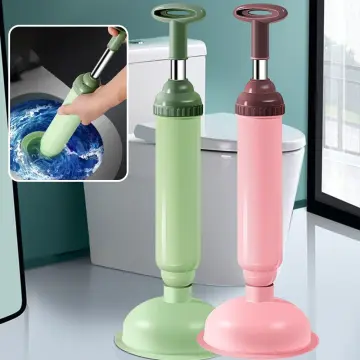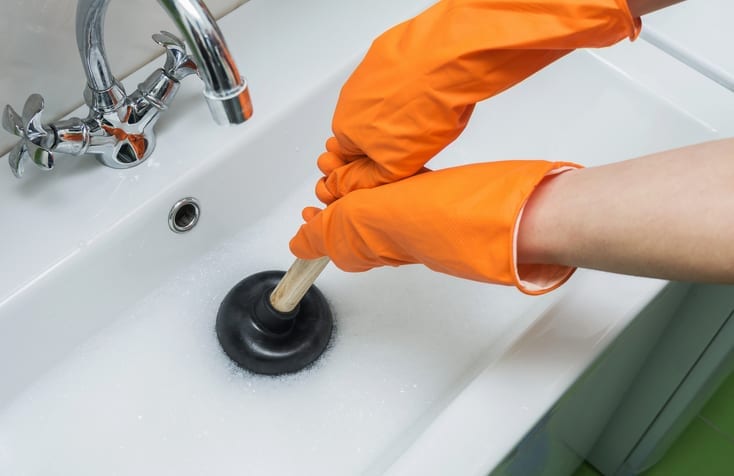Listed here in the next paragraphs you can find lots of good advice involving How to Unclog Your Sink with a Plunger.

Intro
Appropriate upkeep of family drains pipes is essential for protecting against clogs and guaranteeing smooth water circulation. Among the trick devices in every house owner's toolkit is the plunger, along with different drainpipe cleansers developed to deal with stubborn blockages effectively. This article discovers just how to use plungers and drain cleaners properly to maintain your drains streaming freely.
Area 1: Recognizing Bettors
Kinds of Plungers
There are a number of types of bettors readily available, each created for different types of drains pipes and blocks. The most usual types include mug plungers, flange bettors, and accordion plungers.
Just How Plungers Work
Bettors work on the principle of producing stress and suction to displace clogs. When appropriately used over a drain, they create a vacuum cleaner that can take out debris or break up clogs.
Picking the Right Plunger
Selecting the ideal bettor depends upon the type of drainpipe and the nature of the blockage. Cup bettors are optimal for sinks and tubs, while flange bettors are better fit for toilets because of their design.
Typical Mistakes with Plungers
Staying clear of these errors makes certain effective plunging: inappropriate seal around the drain, inadequate pressure, and unclear surrounding debris.
Area 2: Making Use Of Plungers Efficiently
Prep work
Prior to diving, ensure the plunger covers the drain totally and develops a limited seal. Clear any kind of noticeable debris around the drain opening.
Method
Start with gentle plunging motions to develop suction. Rise stress gradually, using a consistent rhythm. Repeat as necessary until the drain removes.
Fixing Tips
If plunging doesn't work, try readjusting the seal, applying petroleum jelly for a much better seal, or making use of a different sort of bettor.
Area 3: Recognizing Drain Cleansers
Sorts Of Drainpipe Cleansers
Drain pipes cleansers can be chemical or enzymatic. Chemical cleansers utilize strong chemicals to liquify clogs, while chemical cleaners make use of natural enzymes to break down raw material.
How Drainpipe Cleaners Job
Chemical cleaners react with obstructions to dissolve them, while chemical cleansers break down organic products like hair and oil without harming pipelines.
Safety and security Considerations
Constantly put on handwear covers and eye defense when utilizing chemical drainpipe cleaners. Make certain sufficient ventilation and adhere to supplier guidelines meticulously.
Eco-Friendly Alternatives
Consider using vinegar and cooking soft drink or enzyme-based cleaners for environmentally friendly choices that are much safer for pipelines and the setting.
Area 4: Utilizing Drain Cleansers Successfully
Application Methods
Put chemical cleansers directly right into the drain opening. Permit them to work for the recommended time before flushing with hot water. Chemical cleaners ought to rest overnight.
Precautions
Stay clear of mixing various sorts of cleansers, as this can create poisonous fumes. Never use chemical cleaners combined with a plunger, as splashing can happen.
Managing Stubborn Clogs
For persistent blockages, consider using a plumbing serpent or calling an expert plumbing to stop damages to pipes.
Conclusion
In conclusion, recognizing how to make use of bettors and drain cleaners successfully is important for preserving healthy and balanced plumbing systems. By picking the right tools and strategies, homeowners can tackle small obstructions and prevent significant plumbing problems down the line.
5 Steps on How to Use a Plunger Effectively
- Creating a Seal: Place the rubber cup of the plunger firmly over the toilet drain hole to create an airtight seal. This seal is crucial to prevent air from escaping and ensure effective plunging.
- Plunge Gently: Gently press the plunger down to compress the air inside without causing splashing. This careful action sets the stage for effective unclogging without creating a mess.
- Maintaining Pressure: Consistently apply pressure to the plunger while pushing and pulling it up and down. This sustained pressure generates the force needed to dislodge the clog.
- Breaking the Clog: Continue plunging until you feel the clog release. Look for the water to start draining, indicating successful removal of the blockage.
- Flushing and Cleaning: After clearing the clog, flush the toilet to confirm it's working properly. Clean the plunger with warm, soapy water and disinfect it for future use to maintain hygiene.
Additional Tips on How to Correctly Use a Plunger
- if you encounter resistance, add some water to the bowl to create better suction;
- check the plunger for any rubber cracks to ensure it's in good condition;
- exercise patience and persistence, as certain clogs might need multiple attempts.
Mistakes to Avoid when Using Toilet Plunger
- avoid using excessive force, as it may damage the toilet;
- don't rush the process; take your time to ensure a proper seal and pressure;
- never use a plunger if you've recently used chemical drain cleaners
Conclusion
Mastering the art of how to properly use a plunger is a valuable skill for every homeowner. By employing the correct techniques, you can effectively address clogs and ensure your toilet functions smoothly. Patience, persistence, and proactive in maintaining your plunger's hygiene are key to success in this endeavor.
Armed with these skills and principles, you can confidently handle plumbing issues as they arise, promoting a well-functioning and hygienic home environment.
https://homealliance.com/blogs/how-to-effectively-use-a-plunger-the-ultimate-guide

I was made aware of that report about Here's How to Correctly Use a Toilet Plunger through a good friend on another website. So long as you enjoyed reading our blog entry kindly make sure you remember to pass it around. Many thanks for your time spent reading it.
Click Here
Comments on “Using Plungers and Drain Cleaner: Professional Tips”